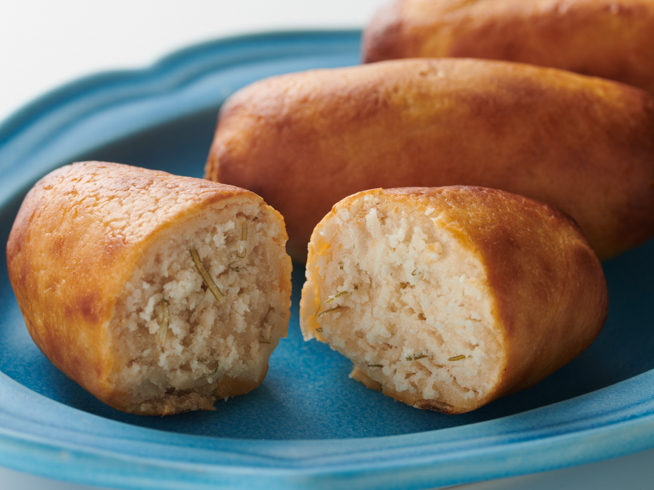
Wakasaimo

HokkaidoWakasaimo
Classification (Large)
Others
Classification (Small)
Japanese sweets
Main ingredients used
sugar, navy beans, white kidney beans, wheat flour, soy sauce, chicken eggs, kombu, salt
When using downloaded images, please read the "Terms of Use" and clearly state that the source of the image is "Traditional Foods in Japan" by the Ministry of Agriculture, Forestry and Fisheries.
If the photo credits is stated, please include it as well.
Example of description
of the photo credits
Example of description when the photo credits is not stated
Source: "Traditional Foods in Japan" Ministry of Agriculture, Forestry and Fisheries
Example of description when the photo credits is stated
Source: "Traditional Foods in Japan" Ministry of Agriculture, Forestry and Fisheries
Photo credits:xxx
Region of inheritance
Toyako Town, Abuta County
Product overview (special characteristics and types)
Wakasaimo is a sweet modeled after baked sweet potatoes and is manufactured by Wakasaimo Honpo, headquartered in Toyako Town, Abuta County. Although the product name contains the word [imo], which means potato in Japanese, potatoes are not used in the raw materials. The product name reflects the founder’s desire to make baked sweet potatoes in Hokkaido, which is an area not suitable for growing sweet potatoes. To produce a soft and flaky texture, the white bean paste is made of ofuku mame, which is a kind of bean and a local specialty of Lake Toya, and contains thin strings of kombu to mimic sweet potato fibers. The surface of Wakasaimo is coated with a sauce made of eggs and soy sauce and baked to imitate the golden brown of a baked sweet potato. It has been loved for years as a local specialty of the Toyako Onsen hot spring, not only by people in Hokkaido, but also by tourists.
History and culture
In 1930, Hakosu Wakasa, the founder of Wakasaimo Honpo, developed a product named Yakiimo, which means baked sweet potato in Japanese, but does not use potatoes, and started to sell it at Kuromatsunai Station in Hokkaido. That same year, the company relocated to the Toyako Onsen hot spring and started a business under the name of Wakasaimo. Following this, they renamed the product from Yakiimo to Wakasaimo, and began to manufacture and sell it. In 1943, they had to stop manufacturing the product for seven years because of a material shortage caused by the Pacific War, but resumed production in 1950, after which they have continued to produce the sweet.
Production method
The dough is made of flour and other ingredients. A white bean paste made of ofuku mame and tebo mame, which is another kind of bean, is mixed with thin strings of kombu and wrapped in the dough. A sauce made of chicken eggs and soy sauce is applied over the surface, and the dumplings are baked until they begin to emit a savory aroma. Ofuku mame harvested every fall is used.
Conservation and succession efforts
Wakasaimo Honpo has been manufacturing and selling Wakasaimo without changing the traditional taste since their foundation. They have a number of shops in Hokkaido, through which they share the taste of Wakasaimo.
Main consumption method
Wakasaimo is eaten as a snack as is. It is sold as a standard souvenir of Hokkaido throughout the region, such as at stations, airports, souvenir shops, and local food fairs. Imoten, which is Wakasaimo deep-fried in batter, is also available.
At-home recipes:Wakasaimo with vanilla ice cream

Ingredients
Wakasaimo
2 pcs.
Vanilla ice cream
200 ml
Mint leaves
As needed
How to make
Put Wakasaimo in a dish, garnish with vanilla ice cream, and top with mint leaves.

